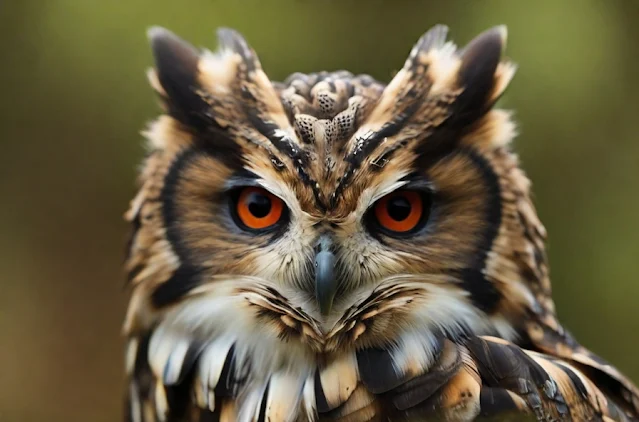Unlocking the Mysteries of the Night: The Enchanting World of Owls
Owls, the guardians of the night, have long fascinated and captivated humans with their mysterious allure. From their silent flight to the haunting hoots that echo through moonlit forests, these majestic birds are more than just creatures of the dark; they are symbols of wisdom, adaptability, and the delicate balance of nature.
The Allure of Owls
The Fascination with Nocturnal Hunters
Owls have a unique charm that transcends cultures and generations. Their ability to navigate the darkness with grace and precision has sparked admiration and intrigue, making them the subject of myths, legends, and artistic inspiration.
The Diverse World of Owls
Barn Owls: Ghostly Elegance
The Barn Owl, with its heart-shaped face and ethereal white plumage, embodies ghostly elegance. Known for its haunting screeches, the Barn Owl is a nocturnal hunter that roams farmlands and grassy meadows.
Snowy Owls: Arctic Royalty
The Snowy Owl, a symbol of Arctic royalty, stands out with its striking white feathers and piercing yellow eyes. Adapted to frigid landscapes, these owls exhibit resilience in the harsh tundra.
Great Horned Owls: Majestic Rulers of the Night
The Great Horned Owl, with its prominent ear tufts and formidable gaze, reigns as one of the most majestic nocturnal predators. Its adaptability allows it to thrive in a variety of habitats, from dense forests to open deserts.
Silent Predators: The Physical Marvels of Owls
Silent Flight: A Feat of Precision
One of the most mesmerizing aspects of owls is their silent flight. Adaptations in their wing and feather structures allow them to move through the air without creating the usual whooshing sounds associated with other birds.
Facial Disc and Ear Tufts: Masters of Camouflage
Owls' facial discs, a collection of feathers around their eyes, help funnel sound to their ears, enhancing their exceptional hearing. Ear tufts, often misunderstood as horns, play a role in their communication and camouflage.
Wisdom and Symbolism Through the Ages
Ancient Wisdom: Owls in Mythology
Owls have been revered as symbols of wisdom in various ancient cultures. In Greek mythology, the owl was associated with Athena, the goddess of wisdom, while in Hinduism, the goddess Lakshmi is often depicted with an owl as her vehicle.
Superstitions and Beliefs: Owls in Folklore
Despite their positive symbolism, owls have also been subject to superstitions and beliefs. In some cultures, they are seen as omens of death, while in others, they are believed to bring good luck and protection.
Guardians of Diverse Habitats
Adaptable Homes: Owls Across Ecosystems
Owls are not confined to specific habitats; instead, they adapt to diverse ecosystems worldwide. From dense forests to open grasslands, they have found a way to thrive and play essential roles in maintaining ecological balance.
Global Distribution: Owl Species Around the World
The distribution of owl species spans the globe, showcasing their adaptability. Understanding their habitats is crucial for conservation efforts aimed at preserving these remarkable birds.
Masterful Hunters of the Night
Carnivorous Diet: A Varied Menu
Owls are carnivorous predators with a diverse diet. Their menu includes small mammals, birds, insects, and even fish, depending on the species and availability of prey in their habitats.
Specialized Hunting Techniques: Silent and Deadly
Owls employ unique hunting techniques, relying on stealth and precision. Their silent flight, exceptional hearing, and sharp talons make them efficient and deadly hunters in the darkness.
Life Cycle and Conservation
Intricate Reproduction: Nurturing the Next Generation
Owls exhibit intricate nesting habits, with some species forming lifelong bonds with their mates. The life cycle of owls involves raising young owlets until they are ready to venture into the nocturnal world on their own.
Conservation Challenges: Threats to Owl Populations
Despite their adaptability, owls face numerous threats, including habitat loss, pollution, and climate change. Conservation efforts are crucial to ensuring the survival of these iconic birds.
Owls in Popular Culture
Literary References: Owls in Literature
Owls have left an indelible mark on literature, from ancient texts to modern novels. Their symbolism often represents wisdom, mystery, and the enigmatic nature of the night.
Media Presence: Owls in Film and Art
Owls continue to captivate audiences in contemporary media. From animated films to intricate artworks, their presence adds a touch of magic and mystery to creative expressions.
Champions of Conservation
NGO Initiatives: Aiding Owl Conservation
Numerous non-governmental organizations (NGOs) and wildlife agencies work tirelessly to protect owl populations. These initiatives focus on habitat preservation, public education, and research.
Citizen Involvement: The Power of Awareness
Engaging citizens in owl conservation is crucial. Raising awareness about the importance of owls in ecosystems and the challenges they face encourages collective efforts to protect these magnificent birds.
Owls as Educational Ambassadors
Sanctuaries and Programs: Educating the Public
Owl sanctuaries and educational programs serve as ambassadors for these magnificent birds. They provide valuable insights into the lives of owls and foster a deeper understanding of their ecological roles.
Owls as Pets: Ethical Considerations
Legal Restrictions: The Reality of Owls as Companions
While the idea of having an owl as a pet may be enchanting, ethical considerations and legal restrictions must be acknowledged. Owls are wild animals that thrive best in their natural habitats.
Unlocking the Secrets of the Night
In conclusion, owls are not merely nocturnal hunters; they are guardians of the night, symbols of wisdom, and ambassadors of the delicate balance of nature. As we navigate a world filled with challenges, let's take a moment to appreciate and protect these extraordinary birds that grace the night sky with their silent flight.

.jpg)


